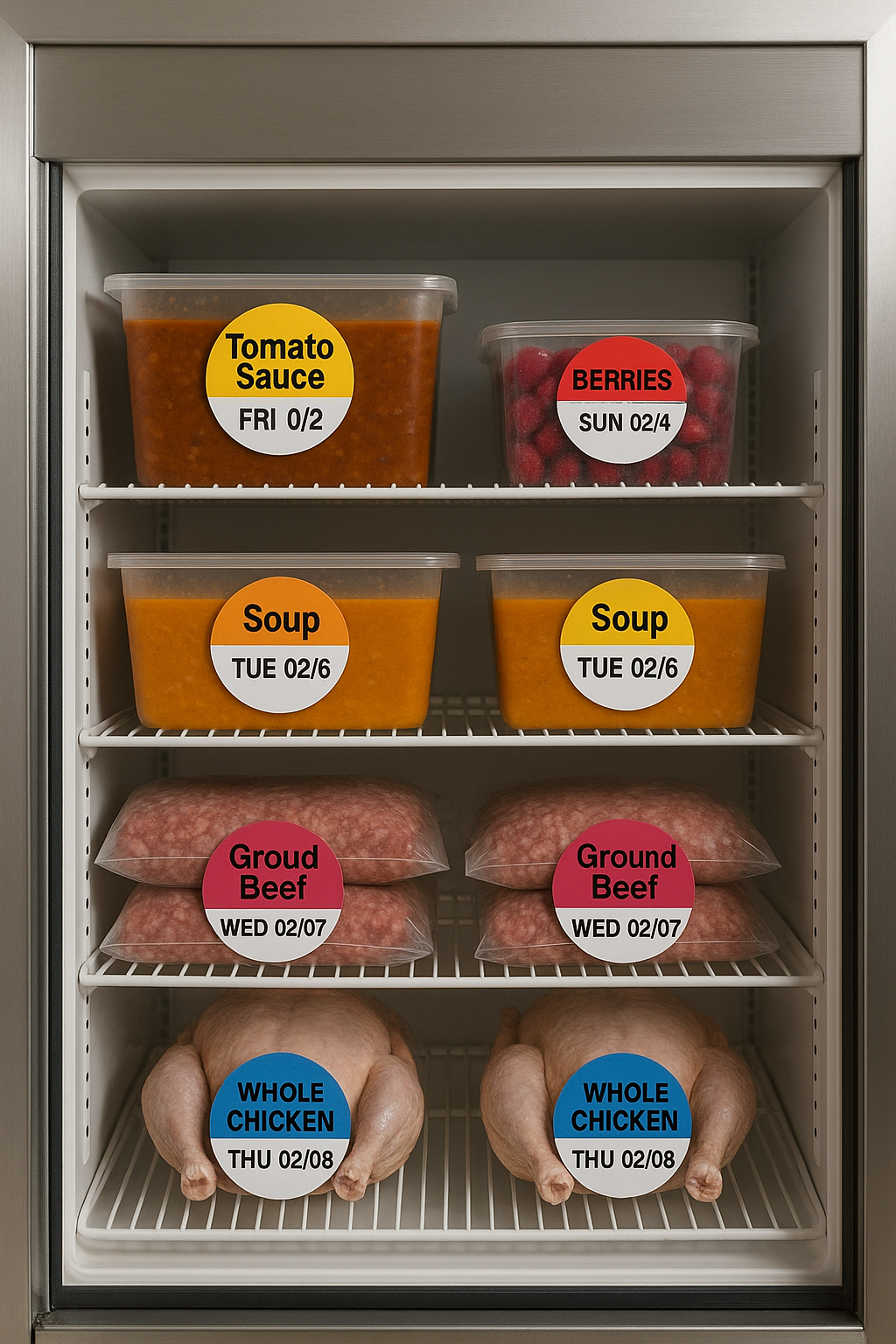40 7.3: Frozen Storage
7.3 Frozen Storage
What is Frozen Storage?
Frozen storage keeps food at temperatures low enough to inhibit the action of bacteria, molds, and yeasts. If food is kept at or below 0°F (-18°C), disease-causing microorganisms go into a resting phase, and spoilage occurs much more slowly. Freezing will not destroy all bacteria, but it inhibits multiplication and ability to cause disease or food spoilage.
Frozen storage is used in restaurants, grocery stores, and homes, to safely preserve food and extend shelf life. Frozen storage is especially crucial for food products with a limited shelf life like meat, poultry, fish, dairy products, and already prepared foods.

https://www.flickr.com/photos/51711390@N08/6071608636
Why is Frozen Storage Important?
Frozen storage plays an important part in food quality and food safety control for several reasons:
1. Prevents Bacterial Growth
Freezing doesn’t kill bacteria, but it deactivates them. This means properly frozen food is safe to eat much longer than food kept at room temperature or in refrigerated storage.
2. Extended Shelf Life
Food may be kept for weeks or months with little change in flavor, texture, or nutrients—if properly stored. This simplifies meal planning and shopping in bulk, with less frequent trips to the store.
3. Saves Money and Reduces Waste
By freezing extra ingredients or leftover food before expiration, restaurants cut costs and prevent food waste.
4. Keeps Food Fresh During Transport
Businesses use frozen storage during transport which enables food like meat, seafood, and other perishables to stay safe.

D’oh Boy (Mark Holloway) from Beatty, Nevada, USA, CC BY 2.0 <https://creativecommons.org/licenses/by/2.0>, via Wikimedia Commons
Maintaining Proper Freezer Temperature
To maintain the safety and quality of frozen foods, they must be stored at the proper temperature:
The temperature in the freezer should be 0°F (-18°C) or lower at all times.
Test internal temperatures using an appliance thermometer.
In food service kitchens, take and verify freezer temperatures a minimum of twice daily to satisfy health code requirements.

https://commons.wikimedia.org/wiki/File:Rubbermaid_R80DC_Refrigerator_Freezer_Thermometer_%2840251799920%29.jpg
Remember! Avoid keeping the freezer door open for prolonged periods of time. Warm air brought into the unit can raise internal temperatures and compromise the safety of the food being stored.
Tip: During a power failure, keep the freezer door closed. A full freezer will keep food frozen for about 48 hours; a half-full freezer will keep it frozen for about 24 hours.
Best Practices for Freezing Food
Proper storage methods maintain food quality and prevent contamination.
Follow these steps:
1. Date and label Each Item. Always mark packages with:
The name of the food
The date it was frozen
Labels enable food items to be located quickly, while also supporting the simple implementation of the FIFO (First In, First Out) method.

Source: ChatGPT
2. Use the Right Packaging
Improper packaging can cause freezer burn, a condition that dries out foods, resulting in changes to flavor and texture. To avoid food changes, use:
Vacuum-sealed bags
Freezer-safe zip-lock bags
Airtight plastic containers
Heavy-duty freezer paper or aluminum foil

3. Implement the FIFO System
FIFO means that older food is consumed before new food. This minimizes waste and enables consumption of food while at its best. Arrange the freezer with the old food at the front and the new food at the back.
4. Plan Food for Safety
Stack food in the freezer to avoid cross-contamination:
Keep raw meats and seafood on lower shelves.
Put ready-to-eat foods on the top.
Separate sections or bins for vegetables, meat, and baked goods.
Don’t overload the freezer. There must be air flow around the food to allow for even temperatures.
Recommended Freezer Storage Times
Some frozen foods are safe for a very long time. However, quality might decrease over time. Follow these general guidelines:
|
Food Item |
Recommended Storage Time |
|
Breads and pastries |
1-3 months |
|
Leftovers (cooked) |
2-3 months |
|
Unopened ice cream |
2-4 months |
|
Raw ground beef |
3-4 months |
|
Raw ground pork |
3-4 months |
|
Whole poultry (raw) |
Up to 12 months |
Following these guidelines ensures optimal taste and texture. Always use your sight, smell, and touch when inspecting frozen foods.
What is Freezer Burn?
Freezer burn occurs when foods are exposed to air inside the freezer. It creates:
Dry, gray-brown patches
A stale taste and tough texture
Freezer-burned food is still safe to eat. However, the quality is lower, and any freezer-burned portions should be trimmed off before cooking.

Best Practices for High-Quality Freezing
Cool hot foods before freezing.
Adding hot foods to the freezer causes the freezer temperature to increase and can cause partial thawing of other foods.
Don’t freeze creamy sauces, lettuce, or cucumbers.
Foods with high water content do not freeze well. This will cause separation or the food to be very watery when thawed.
Never refreeze food which has been thawed, unless it was kept at 41℉ (5℃) or below (i.e., in a refrigerator) at all times.
Real-World Connection: Restaurants Count on Frozen Storage
Commercial kitchens depend on frozen storage to:
Keep bulk food quantities safe
Save money by buying food in large quantities
Reduce waste and easily manage food preparation
Summary: Important Points to Remember
Frozen storage helps keep food safe and prevents harmful bacteria.
Always store frozen food at 0°F (-18 °C) or lower.
Label, date, and rotate food using the FIFO (First In, First Out) method.
To prevent freezer burn, use vacuum-sealed and other airtight packaging.
Follow proper storage guidelines to maintain food quality.


